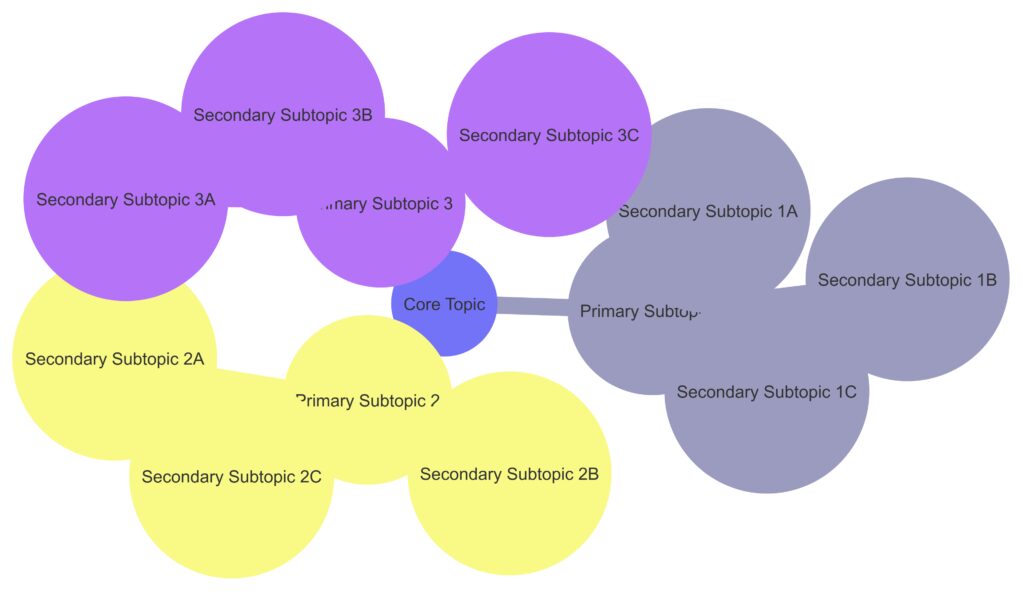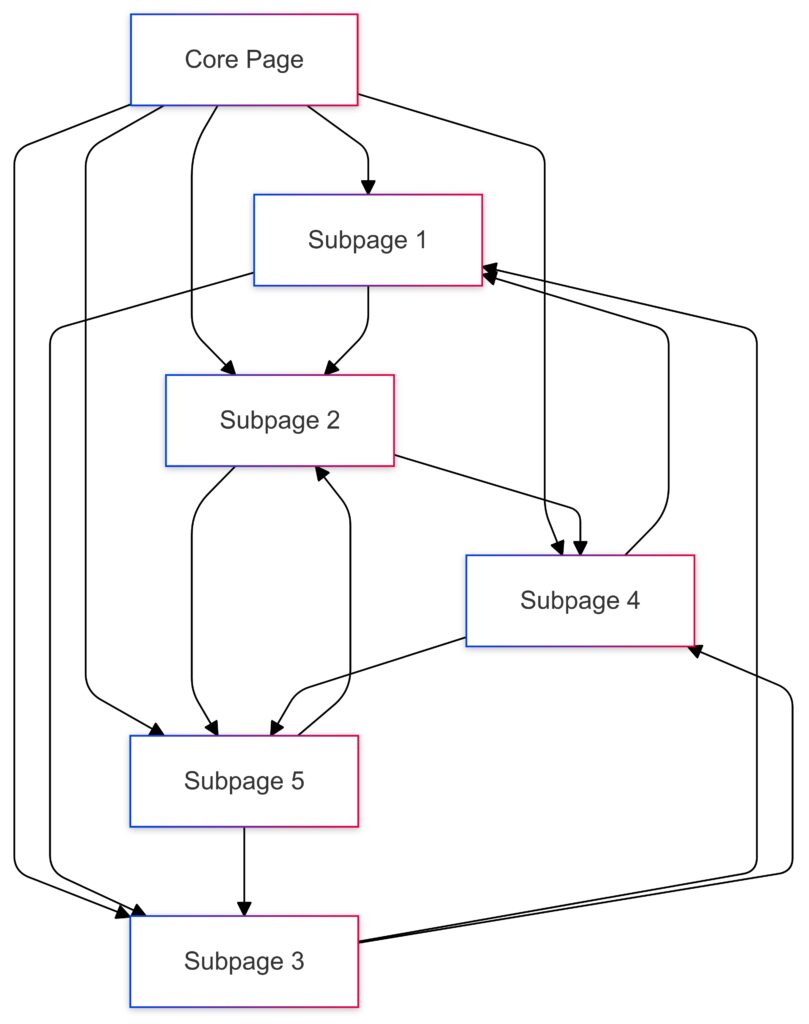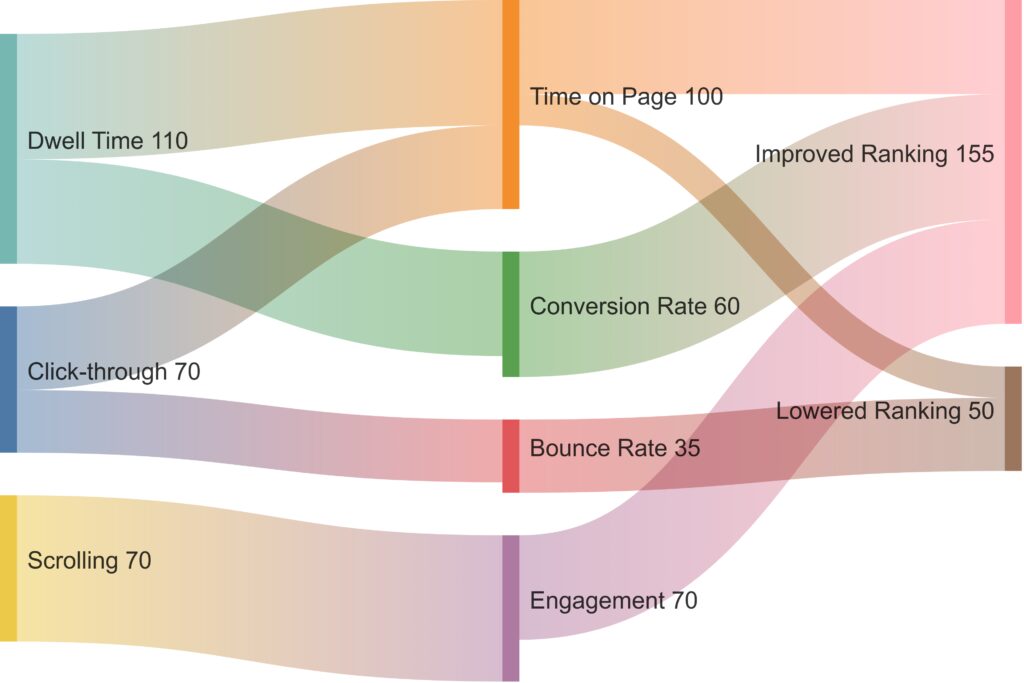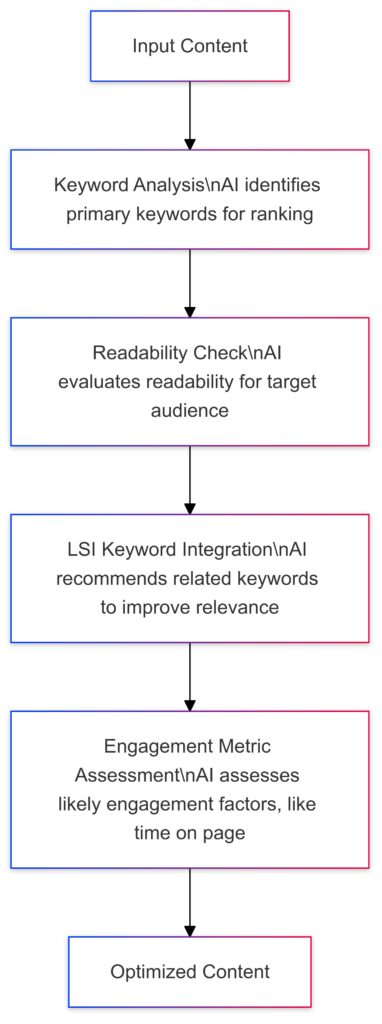
Beyond Keywords and Backlinks:
SEO strategies that once revolved around quantity and link building are transforming. With contextual AI now part of the toolkit for search engines, the focus is shifting to how well content aligns with the needs and expectations of users.
This shift emphasizes content quality and relevance, meaning understanding how contextual AI assesses content could redefine your approach to SEO.
Let’s dive into how this advanced technology is changing SEO content assessment, with a focus on contextual relevance, quality markers, and the broader impact on search rankings.
How Contextual AI Works in SEO Content Analysis
What is Contextual AI?
Contextual AI uses machine learning to interpret the context of words, phrases, and ideas within content, rather than relying on isolated keywords or backlinks alone. Unlike traditional SEO that might have favored keyword density or the sheer volume of backlinks, contextual AI can analyze the broader intent and meaning within a piece.
This process is often grounded in Natural Language Processing (NLP), which allows algorithms to interpret human language with a nuanced understanding of context. Think of it as a way for search engines to “read” content the way a human might, picking up on relevant themes and understanding how content flows, relates, and even feels.

From Keywords to Key Contexts
Historically, SEO has focused on individual keywords, but with contextual AI, it’s more about the entire semantic context around those keywords. This means instead of just counting instances of a term, AI is now assessing how naturally and meaningfully it appears within the content. So, phrases like “what to consider when buying a house” are weighed as part of a broader theme rather than isolated words.
This shift prioritizes user intent and topic coherence over keywords, helping search engines better serve relevant results.
How AI Detects Content Quality Beyond Backlinks
Depth of Information
Today’s algorithms aren’t just counting backlinks but evaluating the depth and value of information. Contextual AI uses machine learning to identify if content provides comprehensive answers and if those answers are relevant to the specific search query intent. This means content that fully addresses a topic—from various angles and with supporting details—scores higher on quality.
For example, a thorough guide on “plant-based diets” that includes nutritional information, meal plans, and expert insights would be rated as higher quality than a shallow overview with general statements.
User-Friendly Formatting
Formatting, surprisingly, has become another quality indicator that contextual AI can detect. Content that is well-structured—think clear headers, bullet points, and concise paragraphs—provides a better user experience and is easier for AI to process and categorize.
In practice, this means a piece that’s properly formatted for skimming will often be ranked higher. AI assesses if readers are finding what they need easily, which affects engagement metrics like bounce rate and time on page.
Reliable Sources and Citations
Gone are the days when content alone could carry SEO weight. Today’s contextual AI values content that includes credible, cited sources. Hyperlinks to authoritative sites signal that a piece has been researched and can be trusted. Whether it’s a medical topic backed by a government site or an article on SEO linking to an expert in the field, authoritative links help AI algorithms verify accuracy and reliability.
This process also involves checking the domain authority of these references, making content supported by high-quality sources rank better.
The Role of Topic Authority in SEO Rankings
Building Topic Authority
With the rise of contextual AI, search engines are looking at topic clusters rather than isolated articles. To rank higher, content should showcase expertise across a range of related topics, creating a content ecosystem that demonstrates deep understanding.
For example, a site covering “sustainable fashion” might include articles on eco-friendly materials, sustainable brands, and tips for reducing fashion waste. AI recognizes these related pieces and ranks the site higher for queries related to sustainable fashion due to its demonstrated authority.

Internal Linking Structures
Topic authority also gains strength through a solid internal linking structure. Contextual AI uses these links to understand content relationships within a site. By linking relevant articles to one another, you’re signaling to search engines that there is a broader knowledge base, creating a more cohesive and interconnected content structure.
This approach doesn’t just enhance user navigation but also helps AI piece together a fuller picture of a website’s expertise, improving its overall authority on particular topics.

Understanding Semantic Search and Intent-Based Results
What is Semantic Search?
Semantic search refers to the search engine’s ability to interpret the meaning behind a query instead of simply matching keywords. Contextual AI is at the heart of this shift, enabling algorithms to identify the purpose and nuances of each search.
For instance, if a user searches for “best hiking spots for beginners,” semantic AI will focus on content that doesn’t just list popular trails but highlights trails with beginner-friendly difficulty, safety, and accessibility. The AI assesses what’s genuinely helpful rather than just a collection of keywords, ensuring users see truly relevant content.
Matching User Intent with Content Purpose
When creating content, it’s essential to understand and reflect user intent. AI can differentiate between informational, navigational, and transactional queries, prioritizing content that aligns with what users actually want. Informational pieces like “how to train for a marathon” differ from transactional queries like “buy running shoes.”
Content that recognizes these differences and tailors itself accordingly tends to rank better. This approach supports a more personalized search experience where results reflect not only the terms users type but the underlying purpose behind them.
Measuring User Engagement as a Quality Signal
The Shift to User Engagement Metrics
Contextual AI now uses user engagement metrics as strong indicators of content quality. Metrics like click-through rates (CTR), time spent on page, and bounce rates provide insights into how effectively a page satisfies users. Pages that engage readers—keeping them on the page longer or encouraging them to explore further—signal higher quality and relevance to search engines.
For instance, a high bounce rate might indicate that users aren’t finding the information helpful, prompting AI to reconsider the page’s ranking. This shift means SEO isn’t just about getting clicks; it’s about ensuring users stick around because they find the content engaging and valuable.

Enhancing Content for Better Engagement
For content to stand out, it should be informative, visually appealing, and interactive. Interactive elements like infographics, videos, and image sliders make the page more engaging, and structured formatting (with headers, lists, and short paragraphs) keeps readers’ attention. These features are easy for contextual AI to detect and analyze, increasing your chances of scoring high in quality assessments.
Interactive content also has the added benefit of increasing time on page, a critical engagement metric that contextual AI considers a positive signal of user satisfaction.
Optimizing Content for Contextual Relevance
Answering Niche Questions and Long-Tail Queries
Contextual AI prioritizes content that answers specific, long-tail queries, as these are often more closely tied to user intent. Instead of targeting highly competitive short keywords, creating content that addresses detailed or niche questions can increase relevance and attract users who are seeking precise answers.
For instance, rather than optimizing for “digital marketing,” content that targets “how to create a digital marketing strategy for a small business” is more likely to attract readers with an exact need. Contextual AI can recognize the specificity and value of this focused content, favoring it for relevant search queries.

Using Latent Semantic Indexing (LSI) Keywords
While traditional keywords still matter, using LSI keywords—terms closely related to your primary keyword that provide context—is a valuable strategy. Contextual AI identifies these semantically related keywords, helping search engines understand the breadth and scope of your content.
For example, a piece on “photography tips” that includes terms like “exposure,” “composition,” and “lighting” signals to AI that the content thoroughly covers the topic. LSI keywords not only make content richer and more valuable but also help establish relevance without overloading primary keywords, which AI recognizes as a quality-enhancing feature.
Leveraging Natural Language Processing (NLP) for Content Quality
How NLP Enhances Content Readability
Natural Language Processing (NLP) is a key component of contextual AI, allowing search engines to gauge the readability and flow of content. Content with varied sentence structures, simple language, and smooth transitions tends to rank higher because it provides a better user experience.
NLP detects poor readability markers—like excessive jargon or complex sentence structures—that can reduce content quality. So, crafting clear, conversational content that feels natural to read not only improves user experience but aligns with what contextual AI deems high quality.
Tone and Sentiment Analysis
Contextual AI also uses NLP for tone and sentiment analysis, assessing whether the tone of the content is appropriate for its intended purpose. For example, a guide on home finance should have a professional and reassuring tone, whereas a travel blog might benefit from a more enthusiastic, informal tone.
Matching tone to topic shows search engines that your content is tailored to your audience, increasing its relevance. This means AI isn’t just reading your content—it’s interpreting it in context, rewarding pieces that have a fitting voice and connect emotionally with readers.
Building Trust and Authority Through Transparent Content
The Importance of Author Expertise
Search engines now factor in the expertise and credibility of content authors. When users or AI systems detect that an article is authored by someone with industry expertise or credentials, it lends authority to the content, increasing its chances of ranking well. Many websites now include author bios for this reason, showcasing relevant experience and qualifications.
Adding author information is especially important for YMYL (Your Money, Your Life) content—topics like finance, health, and legal advice, where misinformation can have serious consequences. Contextual AI can identify authoritative voices in these fields, prioritizing content with clear authorship and credible backing.
Transparency and Disclosure
In an age of misinformation, transparency has become essential. Content that discloses sources, provides background research, and maintains ethical transparency—such as clearly distinguishing between factual information and opinions—ranks higher because it’s seen as trustworthy.
For instance, product reviews with disclosure statements or fact-based articles that reference reputable sources foster trust. Contextual AI values this transparency as it seeks to rank content that users can rely on, especially in areas where accuracy is paramount.
Adapting to Constant AI Advancements in SEO
Staying Ahead with Content Adaptability
With AI’s continuous improvements, the way it assesses and values content will evolve. SEO strategies that work today might change, making adaptability crucial for staying competitive. Content creators and SEO experts need to stay updated on new AI capabilities, such as shifts in engagement metrics, advancements in NLP, and emerging best practices.
For instance, as AI’s understanding of multimedia content improves, using videos, infographics, and other rich media could become even more critical for quality assessments. By keeping an eye on these trends, creators can adapt their content strategies to align with AI’s evolving standards.
Experimenting and Analyzing Results
Finally, ongoing experimentation and data analysis are essential in adapting to contextual AI’s changing evaluation methods. By tracking metrics, testing different types of content, and observing how AI interprets these changes, SEO strategists can refine their approaches to maximize relevance and quality.
Each small adjustment—whether it’s tweaking format, adjusting language, or exploring new engagement tactics—can have a big impact, as AI continually refines its understanding of high-quality content.
Practical Steps to Enhance Content Relevance and Quality
Conduct Thorough Audience Research
To create content that resonates with both contextual AI and readers, it’s essential to understand your audience’s needs, preferences, and questions. Use tools like Google Trends, Answer the Public, and BuzzSumo to identify topics and keywords that are relevant to your audience. This research helps ensure you’re not just creating content that ranks well, but content that genuinely addresses user intent.
By aligning content with audience expectations, you improve user satisfaction, which AI recognizes as a quality indicator. This approach increases engagement metrics, time on page, and return visits—all of which contribute to better SEO performance.
Focus on In-Depth Content Creation
Since contextual AI assesses content quality based on depth and relevance, prioritize creating comprehensive resources that thoroughly cover your topic. Deep-dive articles, guides, and tutorials on niche topics will typically rank higher than surface-level content because they satisfy information-seeking queries more effectively.
To structure this content, use detailed headers, FAQs, and supporting visuals to make it easy for both readers and AI to follow. Include primary keywords and related phrases naturally throughout, ensuring the content remains conversational and avoids keyword stuffing.
Regularly Update Content for Ongoing Relevance
AI values content that stays up-to-date and reflects current information. Regular updates show search engines that you’re committed to delivering accurate and relevant information. For topics that change frequently, like industry trends or technological advancements, set a schedule to refresh data, add new insights, and replace outdated examples.
Updating content also provides an opportunity to improve on-page SEO elements, such as meta tags, headers, and internal links, which can further optimize relevance in the eyes of contextual AI.
The Future of SEO with Contextual AI
Anticipating the Impact of AI on Search Behavior
As contextual AI continues to shape SEO, it’s also influencing how people search for information. AI-driven personalization and voice search are creating shifts in user behavior, with more specific, conversational queries becoming common. This means SEO strategies need to evolve to focus on natural language and semantic search optimization to match changing search patterns.
Content that answers full questions and uses conversational phrasing will become even more important as AI advances. Anticipating these trends now and crafting content that aligns with future search behaviors can help your content remain relevant and competitive.
Embracing AI Tools for Better Content Optimization
Leveraging AI-driven SEO tools like MarketMuse, Clearscope, and Frase can provide insights into what contextual AI considers high-quality content. These tools analyze top-ranking pages and suggest keywords, topics, and formatting styles to improve your content’s relevance and quality.
Incorporating AI tools allows you to make data-driven decisions about content creation and refinement, helping you align more closely with contextual AI’s assessment criteria. As the SEO landscape continues to change, using these tools can give you a competitive advantage by providing targeted insights into how to improve content for both search engines and users.

Input Content: Starting with raw content input.
Keyword Analysis: AI identifies primary keywords to enhance ranking potential.
Readability Check: AI evaluates readability to ensure it suits the target audience.
LSI Keyword Integration: AI suggests related (Latent Semantic Indexing) keywords for context relevance.
Engagement Metric Assessment: AI assesses engagement metrics such as time on page to predict content performance.
Optimized Content: The final output is SEO-optimized content tailored for quality and relevance.
Final Thoughts: Navigating SEO in the Age of Contextual AI
The rise of contextual AI has brought a shift in SEO from a focus on backlinks and keywords to a deeper, more holistic understanding of content quality and relevance. Today, success in SEO requires a commitment to providing value, creating depth, and understanding user intent at a granular level.
By prioritizing content that’s engaging, well-researched, and up-to-date, you align your approach with the latest advancements in contextual AI. In a landscape where algorithms are increasingly sophisticated, investing in quality content will set you up for long-term SEO success in this new era of search.
FAQs
Why is user engagement so important for SEO with contextual AI?
User engagement metrics like click-through rate (CTR), time on page, and bounce rate help contextual AI determine whether content meets user needs. If users are spending time on a page and interacting with its content, it indicates that they find the information valuable and relevant. High engagement metrics act as signals to AI, suggesting the content quality is high and that it satisfies the search intent, which can positively impact rankings.
How does contextual AI use NLP to assess content readability?
Contextual AI leverages NLP to evaluate the readability, tone, and structure of content. It can detect whether language is accessible, sentence structures are varied, and paragraphs are concise—features that make content easy to read and understand. By analyzing readability, NLP helps AI prioritize content that not only has relevant information but also presents it in a clear and conversational style, enhancing the user experience.
What role do LSI keywords play in SEO with contextual AI?
LSI (Latent Semantic Indexing) keywords are terms related to the primary topic that add context and depth to content. Contextual AI uses these keywords to understand the broader theme of the content, which helps in determining its relevance. By naturally incorporating LSI keywords, you create content that’s richer and more comprehensive, which can improve its ranking potential because it signals to AI that the content thoroughly covers the topic.
Why is regularly updating content important for SEO?
Content updates signal to contextual AI that a website is committed to maintaining accurate and relevant information. This is particularly important for topics that evolve, like technology, health, or finance. Fresh information, updated data, and recent examples increase content relevance, showing that it’s up-to-date. Regularly refreshed content tends to rank higher because it better meets user expectations for accuracy and current information.
How can AI tools improve content for SEO?
AI-driven SEO tools like MarketMuse and Frase analyze top-ranking pages to offer keyword suggestions, topic ideas, and structuring tips based on what contextual AI values. These tools help optimize content by providing insights into how to make it more relevant and competitive. By incorporating AI tools, content creators can better align with the factors contextual AI considers when assessing quality, which can lead to improved SEO performance.
What is the role of transparency in SEO with contextual AI?
Transparency in content—such as including author credentials, citing reputable sources, and clearly distinguishing between facts and opinions—builds trust and credibility. Contextual AI values content that is transparent because it aligns with user expectations for reliable information. For topics where accuracy is critical, like health or finance, transparency can improve rankings by signaling to AI that the content is trustworthy and authoritative.
How does contextual AI impact long-tail keyword strategies?
Contextual AI favors content that answers specific, long-tail queries, as these often align more closely with user intent. Long-tail keywords allow content to target niche questions and offer detailed answers, which AI recognizes as valuable. By focusing on long-tail keyword phrases, you can increase the likelihood of attracting users with precise needs, improving relevance and engagement, and ultimately boosting SEO performance.
How does contextual AI assess content depth and detail?
Contextual AI evaluates content by examining its comprehensiveness and ability to cover a topic from multiple angles. Content that provides a thorough, well-rounded view of a subject—with supporting details, subtopics, and practical examples—tends to score higher for quality and relevance. Contextual AI looks for signals of depth, such as the presence of various related subtopics, expert insights, and supporting evidence, which indicate that the content is valuable and addresses user needs in full.
What is the significance of topic clusters for SEO with contextual AI?
Topic clusters consist of a core topic surrounded by related content, linked internally to create a content ecosystem. Contextual AI views these clusters as a signal of topic authority, as they demonstrate a website’s expertise in a specific area. By interlinking content around a core topic, you show AI that your site has in-depth knowledge and resources on a particular subject, which can improve your ranking for a broader range of related keywords.
How do internal links enhance SEO performance in the context of AI?
Internal linking helps contextual AI understand the relationships between content on a website, creating a cohesive structure that improves topic relevance. By linking related pages, you guide both users and AI through a logical content path, showing how each piece of content supports a larger subject. This approach strengthens SEO performance by making it easier for AI to recognize the depth of content across your site, improving its authority on specific topics.
Why does contextual AI value user intent in SEO?
User intent is central to contextual AI because it allows search engines to deliver relevant results that genuinely match what users are seeking. Contextual AI analyzes the phrasing, context, and search patterns of a query to determine if a user’s intent is informational, navigational, or transactional. Content that aligns closely with the detected intent tends to rank higher, as it’s more likely to satisfy user expectations. This shift means SEO strategies should focus on understanding and meeting specific user needs.
How does contextual AI impact multimedia content like videos and infographics?
Contextual AI is advancing in its ability to understand and assess multimedia content, such as videos, infographics, and interactive elements. These elements can enhance user engagement and improve time on page, which signals high content quality. Visual and interactive features often simplify complex information, making it more digestible and engaging for users. AI algorithms recognize this engagement, which can lead to better rankings for content that effectively incorporates multimedia.
What role does sentiment analysis play in content evaluation by contextual AI?
Sentiment analysis is a tool within Natural Language Processing (NLP) that contextual AI uses to assess whether a piece of content has an appropriate tone for its subject and audience. AI can detect if content is enthusiastic, professional, or neutral, allowing it to match user expectations. For instance, a cheerful tone may be suited to travel blogs, while a more serious tone is appropriate for medical topics. Aligning tone with audience expectations improves user experience, which AI identifies as a quality indicator.
Can contextual AI improve search results for voice-activated searches?
Yes, contextual AI is particularly effective for voice search, which often involves natural language and question-based queries. Since contextual AI is adept at interpreting conversational language and identifying intent, it enables better results for voice searches. Optimizing content with natural phrasing, long-tail keywords, and direct answers to common questions can improve visibility in voice search, aligning with how people speak rather than type.
Why is focusing on user experience critical for SEO in the age of contextual AI?
Contextual AI emphasizes user experience (UX) as a fundamental component of SEO, rewarding sites that offer value, readability, and ease of navigation. UX factors like mobile optimization, fast loading times, and intuitive layout enhance user satisfaction and engagement, which contextual AI tracks closely. Positive user experiences reduce bounce rates and increase dwell time, both of which AI interprets as signals of content quality and relevance, improving overall SEO performance.
How does contextual AI handle search queries with ambiguous intent?
Contextual AI has advanced capabilities for interpreting ambiguous queries, using clues from past search behavior, location data, and query wording to deduce intent. When a query could imply multiple meanings (e.g., “apple” as a fruit or a tech company), AI uses surrounding context to provide the most likely result based on trends or user behavior. Content that includes diverse keywords or addresses multiple angles can capture traffic from these queries, as AI recognizes content that can satisfy various interpretations.
What is the E-A-T principle, and why does contextual AI prioritize it?
The E-A-T principle—Expertise, Authoritativeness, and Trustworthiness—is a quality standard contextual AI uses to assess content. Originally emphasized by Google, E-A-T is vital for YMYL (Your Money, Your Life) content, such as health, finance, and legal topics, where accuracy is crucial. Contextual AI values content that demonstrates authority through credible sources, transparent authorship, and a professional tone. For sites in competitive or sensitive fields, focusing on E-A-T can significantly improve rankings.
How can content creators use AI tools to improve SEO performance?
AI-powered SEO tools like SurferSEO and Clearscope help content creators analyze top-ranking pages and suggest keyword variations, related topics, and readability improvements that align with AI’s assessment criteria. These tools provide insights into the ideal content length, structure, and keyword usage for specific queries, allowing creators to optimize content effectively. By aligning with what contextual AI values, these tools support a data-driven approach to SEO that can enhance content relevance and ranking potential.
Does contextual AI reward websites with high domain authority?
While contextual AI does consider domain authority as a ranking factor, it prioritizes content quality, relevance, and intent-matching. High domain authority indicates reliability and credibility, but new or smaller sites can still rank well if their content thoroughly satisfies user intent and provides high value. Contextual AI’s emphasis on relevance and user experience means that even niche or new sites have opportunities to rank by focusing on quality and depth.
Why are internal and external links so important for SEO with contextual AI?
Contextual AI views internal links as pathways that help users and AI navigate related content, reinforcing topic authority and creating a cohesive experience. External links to reputable sources provide validation and support, signaling trustworthiness. By including both types of links, content signals its connection to broader topics and reliable sources, which contextual AI values as indicators of quality. Thoughtful linking strategies can thus improve rankings by enhancing both user navigation and content credibility.
How does contextual AI prioritize content that addresses seasonal or trending topics?
Contextual AI quickly adapts to seasonal and trending searches by prioritizing fresh content that meets current user interests. For example, during a holiday season, content related to “gift ideas” or “holiday recipes” will rank higher if it’s recently updated or newly published. AI uses signals like publication date, engagement surges, and search volume increases to identify trending topics, rewarding timely and relevant content that aligns with current trends.
Can contextual AI recognize and value user-generated content?
Yes, contextual AI can assess user-generated content (UGC), such as reviews, forums, and comments, for relevance and quality. UGC is often seen as trustworthy by users, especially for product reviews or testimonials. AI evaluates the authenticity, sentiment, and engagement levels of UGC, valuing it particularly in e-commerce and service-based websites. When integrated thoughtfully with other content, UGC can enhance trustworthiness and engagement, contributing positively to SEO.
How does mobile-friendliness impact SEO rankings in the context of contextual AI?
Mobile-friendliness has become a significant ranking factor due to the increasing use of mobile search. Contextual AI evaluates whether a site is optimized for mobile devices by assessing loading speed, readability, and navigation on mobile screens. Sites that are mobile-friendly tend to have lower bounce rates and higher engagement, especially in mobile-dominant industries. Ensuring mobile optimization not only improves user experience but also aligns with contextual AI’s standards for quality and accessibility.
Resources
1. Google’s Search Quality Evaluator Guidelines
Google’s Search Quality Evaluator Guidelines provide insights into how Google’s algorithms assess content for quality, relevance, and E-A-T (Expertise, Authoritativeness, Trustworthiness). Although not specific to contextual AI, these guidelines outline essential factors that Google values, many of which are assessed by AI.
- Google Search Quality Evaluator Guidelines PDF
2. SEMrush Blog
SEMrush regularly publishes in-depth articles and research reports on SEO trends, content marketing, and AI-driven SEO tools. The blog is an excellent resource for practical tips on optimizing content to align with the latest AI-focused SEO practices.
- SEMrush Blog on SEO
3. Moz: Beginner’s Guide to SEO
Moz’s guide is a comprehensive, beginner-friendly introduction to SEO that covers essential elements like keyword research, content optimization, and SEO ranking factors. Moz also offers updates on how contextual AI and machine learning are changing the landscape of search.
- Moz Beginner’s Guide to SEO
4. Ahrefs Blog and Academy
Ahrefs provides a wealth of resources on advanced SEO techniques, content strategies, and tools for tracking SEO performance. Their guides and videos cover AI’s influence on SEO and offer tips on creating content with high-ranking potential.
- Ahrefs Blog
- Ahrefs Academy
5. Google’s AI Blog
Google’s AI Blog gives insights directly from the teams working on AI and machine learning advancements that impact SEO, including Natural Language Processing (NLP) and contextual understanding. It’s a great resource for staying informed on the latest AI technologies used in search engines.
- Google AI Blog
6. MarketMuse
MarketMuse is a content research and optimization platform powered by AI, designed to help marketers develop high-quality content that ranks. Their resources include blog posts, webinars, and case studies on creating content strategies that align with contextual AI requirements.